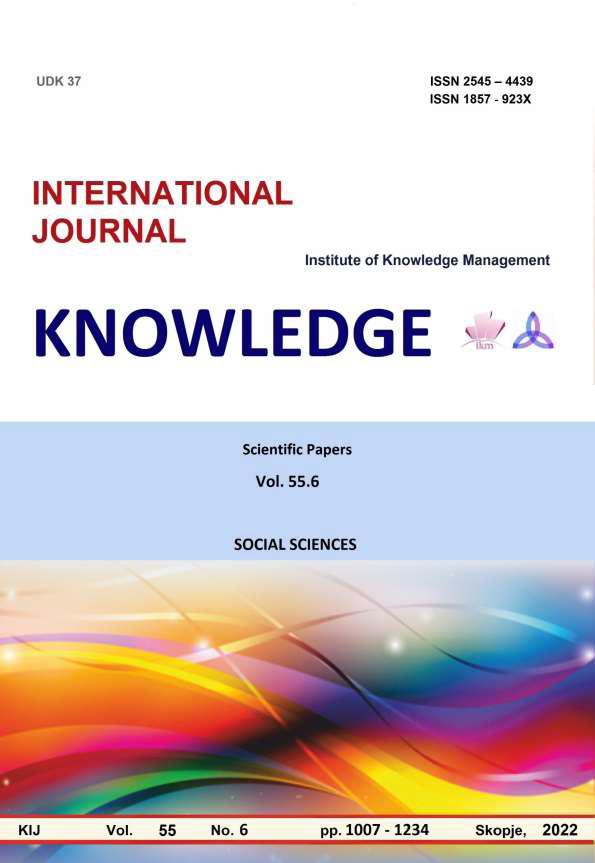EMPLOYEE DEFINED INCOMES PROGRAMS AFTER LEAVING THE ENTERPRISE - METHODOLOGY OF ACCOUNTING AND ANALYSIS
Keywords:
participates, programs, defined incomes, methodology, analysisAbstract
Drafting accounting information about the benefits of employees hired by the enterprises in the Republic
of Bulgaria under employment contracts with regard to their service is based on the provisions of the Labour Code,
Social Security Code, Health Insurance Act, the annual acts adopted by the National Assembly: State Budget Act;
State Social Security Scheme Budget Act; National Health Insurance Fund Budget Act, and on the provisions of the
applicable accounting standards – Accounting Standard 19 (AS 19) “Employee Benefits”, and International
Accounting Standard 19 (IAS 19) “Employee Benefits”.
According to AS 19 the provisions of which are used by the enterprises that apply the national accounting
regulations, employee benefits comprise: short-term benefits, post-employment benefits; other long-term benefits;
termination benefits; equity compensation benefits.
The object of this publication refers to post-employment employee benefits payable due to termination of the
employment or official relationships. We speak about different benefit plans. They are defined as formal or informal
agreements by virtue of which the employer provides benefits to members (one or more) of its staff post their
employment upon termination of their employment or official relationships.
These post-employment benefit plans may comprise: defined contribution plans; defined benefit plans; multiple
employer plans; state plans and equity compensation (benefit) plans.
The subject matter of this publication refers to post-employment defined benefit plans. Under these plans, the
enterprise’s liability is updated in a way that does not differ materially from the amounts that are subject to payment
to the employees post their employment.
In accordance with AS 19 “Employee Benefits” defined benefit plans comprise two items: assets under the plan and
liabilities for payment of defined benefits.
The author’s objective is to systemize in this publication some major issues relevant to the defined benefit plans,
such as:
1. the enterprise that participates in the plan should measure the fair value of assets and the present value of
the liability for payment of retirement benefits to its employees in the future;
2. the amount of expenses or income under the plan is stated in the enterprise’s statement of income and
expenses for the current reporting period;
3. actuary gains and losses are the changes in the amount of the liability for payment of defined benefits to
employees – they are stated in the liability side of the enterprise’s balance sheet;
4. actuary gains and losses are the changes in the fair value of assets under the plan – they are stated in the
asset side of the enterprise’s balance sheet;
5. methods for measurement, accounting and follow-up analysis of actuary gains and losses under the plan.
The abovementioned issues determine the relevance of the defined benefit plans for employees post their
employment in the enterprise.
References
Brezoeva, B. (2016). Accounting treatment of defined benefit programs in accordance with National Accounting Standards. Yearbook of IDES.
Chukov, K., & Ivanova, R. (2022). Financial and economic analysis. Sofia. IC – UNWE.
Grigorov, S. (2021). The role of actuaries in insurance accounting in the conditions of digitalization. Bookkeeping and digitalization. Sofia. IC – UNWE.
Nachkova, M., Milanova-Tsoncheva, E., & Mavrudiev, H. (2018). Schetovodstvo na zastrahovatelite i osiguritelite. Sofia. IC – UNSS.
Staneva, V. (2020). Criteria and approaches for differentiation in accounting estimates from the actuarial valuations. Economic science, education and the real economy: developments and interactions in the digital age. Varna. University publishing house Science and Economics.
Accounting Standard 19 Personnel Income. Published SG No. 30/04/7/2005.
Conceptual Framework for Financial Reporting. (2018). Issued by the International Accounting Standards Board. https://www.ifrs.org.
Commission Regulation (EC) 1126/2008 of November 3, 2008. OJ of the EU, no. L320/34, Paragraph 5.
International Accounting Standard (IAS) 26 Accounting and accounting for retirement plans, Item 21. https://audit-bg.com/wp-content/uploads/dokumenti/MSS26.pdf
Law on Accounting. Published SG No. 95/08/12/2015. Last change SG No. 19/05/03/2021.





